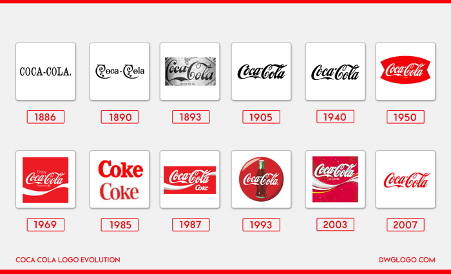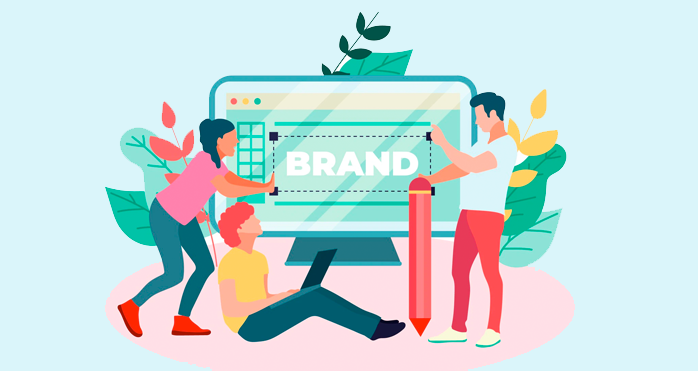How has your business brand changed over the last 5-10 years? Has it evolved, gone through significant changes or has it completely stagnated?
How often and how much do successful brands change?
It varies, but all brands change. You may say that brands like “Coca-Cola” never change, but they do much more than you might think. While their core values stay largely the same, their advertising is constantly evolving, and so are their image, logo, and recipe. Take a look at the logo evolutions below. Like many, you probably did not notice there were quite so many.

If even big brands like Coke have to be constantly changing, you should take from this that a business like yours should be. Why? Because the world moves on and so do markets, and people’s beliefs, expectations, tastes and behaviours. It is interesting to note that Coca-Cola even went ‘backwards’ to reflect its brand origins and esteemed history. Burger King has done the same – go and take a look.
Evolution is not always ‘forwards’!
My recommendation is you should have a business plan for every 1, 3 or 5 years, and you consider your brand every 2-3 years and how, from the logo up, you portray your business to the world. The longer you leave it, the more significant and more drastic the changes will need to be, and you will lose a lot of ground along the way.
How do I update my brand without it costing me a fortune?
Progressive evolution is the key. I had a meeting with a large logistics company who were terrified at the potential implications of updating its logo and image. They held back because they had polarised on a view that absolutely everything would need to change overnight at immense expense, from their website to their entire transport fleet’s livery. As a result, they had done nothing in some 20 years because the board could never agree to do it. Avoid this trap!
In an instance like this, the solution is to look at ways in which your current identity (logo) can be modernised without changing its essential constructs—for example, retaining the overall elements and colours but tweaking them and modernising them. A good evolution is just enough to bring it beyond up-to-date, and into the next 3-5 years, in terms of where you expect your business to be. It has to reflect where you are going and not where you are; it has to help you get to your destination and not be outdated the moment you launch it.
If a professional branding agency does this the right way, you will find you can put your new logo by the side of the old one and see some strong, marked differences and that they are inherently related. If you were to see them separately, you would think they are pretty much the same. This enables you to launch your new identity without throwing away all of your collateral and, instead, to update everything in stages when facilitated/necessitated because all nestles nicely together. That is the benefit of progressive evolution.
As I mentioned above, if this does not happen, you will reach a point in time where you have to change everything at great expense drastically and, if you cannot afford to do that, yes… you will be another one of those stagnating businesses. You will look tired and dated, and you will lose business as a result.
“Tunnocks Tea Cakes and Caramel Wafers have never changed their branding!”
… Correct. And their market share is in decline as the older generations who are their customers disappear!
Okay, so where do I start?
There is nothing to be gained by changing for its sake; you must know the reasons driving change to maximise the way you benefit from it.
Ask yourself the following questions:
- How has my business changed? Is it bigger, has our style changed, and do we offer different things now?
- How has the market changed? What are my competitors doing? Who is the market leader and why? What have been the fundamental changes in this industry over the last couple of years and why?
- How have my customers changed? Who ARE my customers now? What do they want? How do they buy, and what do they expect?
- Where are the opportunities? What can I do to stand out based on above? Where is the industry trend going? What should I look like now to attract more, bigger and better customers?
By simply answering those four questions, you will gain a strong insight into where your brand is weak. Remember, your brand is not just your logo but all your website, collateral, visual, and written style – what you say and how you say it.
Armed with this knowledge, you will have enough to sculpt your business style, values and direction. With the assistance of a brand/marketing agency, you can then brief them effectively and get on doing something about it rather than stagnating and, worse, declining.
Ask yourself, is your brand in the dark ages, is it merely up-to-date or is it standing out and leading in your marketplace? If it’s not the last one, it’s probably time to do something about it.
If you would like any advice on your brand, please get in touch with us at TFA, and explore other brands that we have transformed!
